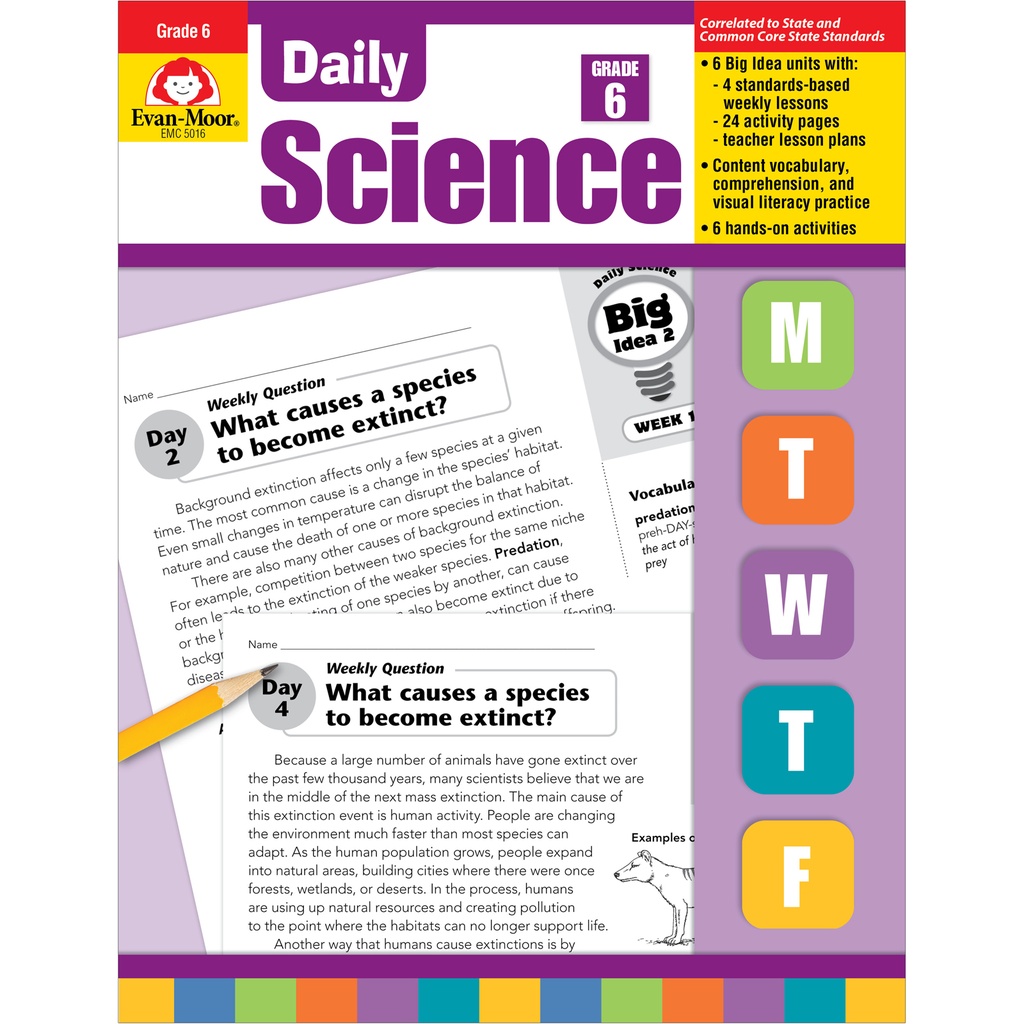Daily Science Grade 6
Science can still be fun in middle school. The concepts are more involved, but students can learn the scientific concepts and vocabulary of life, physical and Earth science innovatively with Daily Science from Evan-Moor. This science activity print teacher’s edition is ideal for grades six, delivering 150 lessons on vital science standards. Each week is divided into interesting units that include hands-on science activities, important science vocabulary and more. Students will explore intriguing scientific questions like why some people are left-handed and why crocodiles have survived for millions of years. The lessons easily add to any middle school science curriculum. 192 pages.
30 weeks of instruction cover the following standards-based science topics:
Big Idea 1: Living things are made mostly of cells. Multicellular organisms have different cells that perform specialized functions
Week 1: Can horses and zebras have babies together?
Week 2: Why are some people left-handed?
Week 3: How can corn be yellow, white, or blue?
Week 4: Are identical twins exactly alike?
Week 5: Unit Review
Big Idea 2: Changes in the environment can affect the survival of a species
Week 1: What causes a species to become extinct?
Week 2: How have crocodiles survived for millions of years?
Week 3: If the ice cap melts, why can't polar bears just adapt?
Week 4: Would humans survive if there was another ice age?
Week 5: Unit Review
Big Idea 3: The tilt of Earth's axis and energy from the sun affect seasons and weather patterns
Week 1: What causes the weather?
Week 2: Why don't hurricanes happen at the equator?
Week 3: Why are the North and South Poles so cold?
Week 4: Are the seasons reversed on the other side of the world?
Week 5: Unit Review
Big Idea 4: Earth is divided into layers: crust, mantle, and core. The crust is made up of plates and move slowly around the Earth's surface
Week 1: Why do the continents look like they fit together?
Week 2: How do scientists know what is inside Earth?
Week 3: What happens when two continents collide?
Week 4: What will Earth's surface look like in the future?
Week 5: Unit Review
Big Idea 5: Matter is made up of tiny particles called atoms. Different arrangements of atoms compose all substances
Week 1: What do atoms look like?
Week 2: What is the periodic table?
Week 3: What is water made of?
Week 4: How are living things different from nonliving things?
Week 5: Unit Review
Big Idea 6: Energy can be mechanical, electrical, thermal, or chemical
Week 1: How do windmills make electricity?
Week 2: What makes popcorn pop?
Week 3: What makes fireflies glow?
Week 4: How do fireworks work?
Week 5: Unit Review
